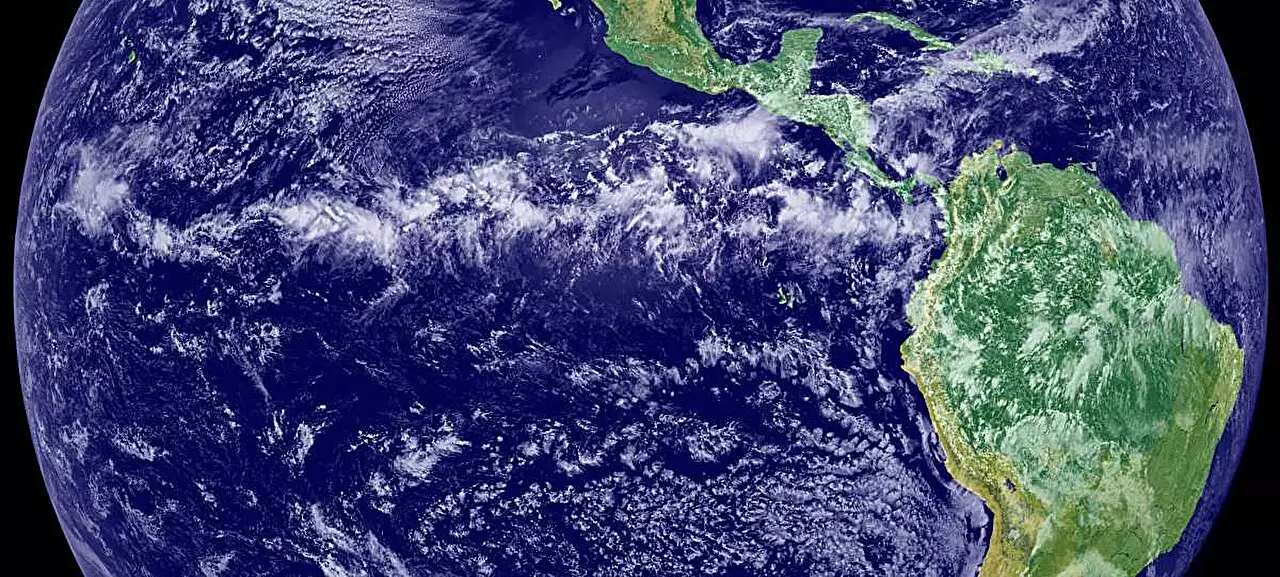The scorching summer of 2024 will linger in the memory of many, not just as a season of extreme heat but as a stark reminder of the pressing issues surrounding our planet’s climate. As global temperatures soar, droughts and heat waves have become alarmingly common, particularly in regions like North America and Europe. These climatic challenges bring about significant threats, including wildfires, crop failures, and public health crises. An intricate web of factors contributes to these heightened temperatures, but recent research unveils a critical culprit: the gradual weakening of the Earth’s air circulation systems—a phenomenon deeply rooted in human activity.
The Earth’s climate is significantly influenced by air circulation systems that play a vital role in distributing heat and moisture. Central to these systems are two elements: the storm tracks and the Hadley circulation. Storm tracks consist of a series of weather systems characterized by high and low-pressure areas that travel from west to east, profoundly impacting climate patterns globally. Concurrently, the Hadley circulation describes the movement of warm air rising at the equator, traveling toward the poles, and descending in the subtropics. This cyclical flow is essential in maintaining a balance within various climate zones.
Over recent decades, scientists have noted a disturbing trend—both storm tracks and Hadley circulation exhibit signs of weakening. Although the connection between human-induced emissions and the weakening of Hadley circulation had been established previously, the impact of human activity on storm tracks remained ambiguous until now. Groundbreaking studies, including those led by Dr. Rei Chemke from the Weizmann Institute of Science, have shed light on the complexities underlying these patterns, revealing that human-caused emissions are a dominant factor in the deterioration of both systems.
The revelations from Chemke and his colleagues stem from extensive analyses of climate data derived from observations and sophisticated climate models. By incorporating historical emissions into their models, researchers were able to correlate the ongoing weakening of storm tracks to man-made greenhouse gas emissions, primarily carbon dioxide and aerosols. This injection of pollutants into the atmosphere has disproportionately warmed higher latitudes compared to lower ones. Consequently, the temperature gradient that drives storm tracks—the difference between the cold and warm regions—has lessened, resulting in diminished intensity and frequency of these storms.
“This reduction leads to less cool air being transported from the ocean to the land,” remarked Chemke, implying that the lack of cooling influence exacerbates the conditions leading to extreme summer temperatures. Such findings underscore the urgency in understanding how human actions are not only contributing to climate change but are fundamentally altering the mechanisms that govern weather patterns.
While human-induced factors dominate the current climatic narrative, it’s crucial to recognize the historical context of natural influences on climate systems. In a complementary study, Chemke and his student, Or Hess, explored the interplay of natural phenomena—such as volcanic activity and variations in solar energy—and their impact on the Hadley circulation over the past millennium. The results were striking: natural factors historically strengthened the Hadley circulation, contrasting sharply with the contemporary scenario where human emissions are driving a weakening trend.
This research highlights an essential aspect of climate science: the interplay between natural and anthropogenic factors is complex and requires careful consideration. While the present climate crisis is largely caused by human activity, ignoring the role of natural systems could lead to oversimplifications in understanding and addressing climate dynamics.
As climate scientists increasingly focus on anthropogenic effects, the findings from Chemke’s studies advocate for a renewed emphasis on the significant role of natural factors. Historically, natural events have played a crucial part in regulating climate patterns, and their impacts must be factored into contemporary models to enhance their accuracy. Recognizing the dual influence of human and natural factors enables a more nuanced approach to climate science, potentially leading to more effective strategies in mitigating the evolving climate crisis.
The integration of findings from multiple studies paints a sobering picture of the increasingly fragile state of our climate systems. With human activities driving significant changes in air circulation, the consequences are evident in our increasingly volatile weather patterns. This knowledge compels us to recalibrate our understanding of climate dynamics, acknowledging both human and natural contributions in our quest to combat climate change and forge a sustainable path forward.


Leave a Reply